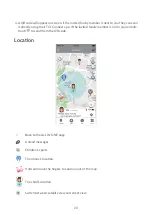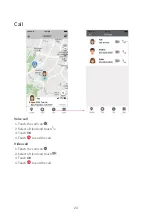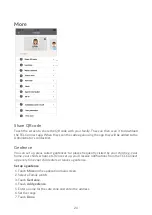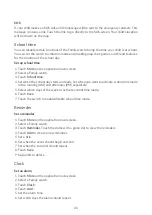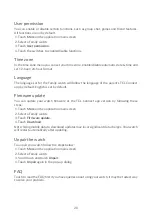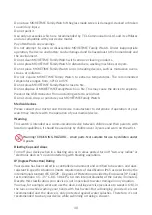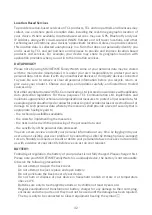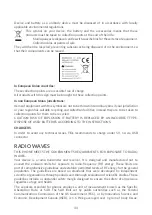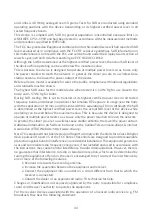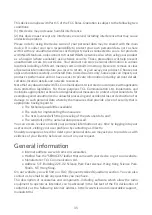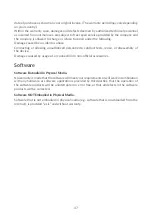
34
and Limbs is 4.0 W/Kg averaged over 10 grams. Tests for SAR are conducted using standard
operating positions with the device transmitting at its highest certified power level in all
tested frequency bands.
This device is complied with SAR for general population /uncontrolled exposure limits in
ANSI/IEEE C95.1-1992 and had been tested in accordance with the measurement methods
and procedures specified in IEEE1528.
The FCC has granted an Equipment Authorization for this model device with all reported SAR
levels evaluated as in compliance with the FCC RF exposure guidelines. SAR information on
this model phone is on file with the FCC and can be found under the Display Grant section of
www.fcc.gov/oet/ea/fccid after searching on FCC ID: 2ACCJB112
Although the SAR is determined at the highest certified power level, the actual SAR level of
the device while operating can be well below the maximum value.
This is because the device is designed to operate at multiple power levels so as to use only
the power required to reach the network. In general, the closer you are to a wireless base
station antenna, the lower the power output of the device.
Before a device model is available for sale to the public, compliance with national regulations
and standards must be shown.
The highest SAR value for this model device when tested is 1.14 W/Kg for use close to the
body, and 1.57 W/Kg for Limbs.
During SAR testing, this is set to transmit at its highest certified power level in all tested
frequency bands, and placed in positions that simulate RF exposure in usage near the body
with the separation of 10 mm, and the Limbs with the separation of 0 mm. Although the SAR
is determined at the highest certified power level, the actual SAR level of the device while
operating can be well below the maximum value. This is because the device is designed to
operate at multiple power levels so as to use only the power required to reach the network.
In general, the closer you are to a wireless base station antenna, the lower the power output.
Additional information on SAR can be found on the Cellular Telecommunications & Internet
Association (CTIA) Web site: http://www.ctia.org/
Note: This equipment has been tested and found to comply with the limits for a Class B digital
device pursuant to part 15 of the FCC Rules. These limits are designed to provide reasonable
protection against harmful interference in a residential installation. This equipment generates,
uses and can radiate radio frequency energy and, if not installed and used in accordance with
the instructions, may cause harmful interference to radio communications. However, there is
no guarantee that interference to radio or television reception, which can be determined by
turning the equipment off and on, the user is encouraged to try to correct the interference by
one or more of the following measures:
• Reorient or relocate the receiving antenna.
• Increase the separation between the equipment and receiver.
• Connect the equipment into an outlet on a circuit different from that to which the
receiver is connected.
• Consult the dealer or an experienced radio/ TV technician for help.
Changes or modifications not expressly approved by the party responsible for compliance
could void the user’s authority to operate the equipment.
For the receiver devices associated with the operation of a licensed radio service (e.g. FM
broadcast), they bear the following statement:
Summary of Contents for MOVETIME MT40A
Page 1: ...User manual MT40A...

